List of popular GameFi tokens
On June 3, the GameFi sector saw unusual movements, and the top five gainers on Binance were all GameFi-related tokens.
 JinseFinance
JinseFinance
Author: Trustless Labs
Since the launch of the Ethereum mainnet on July 30, 2015, the advent of the Web3 era has been officially announced. The smart contract deployment function of the Ethereum mainnet supports the design and operation of DAPPs (decentralized applications). On this basis, a large number of popular DeFi (decentralized finance) have emerged, such as Uniswap, which realizes DEX (decentralized exchange) through automated market makers, and MakerDAO, which realizes contract lending. These DeFis have attracted a lot of hot money with their high investment returns, openness, transparency, strong concealment, and complete openness. The total market value of the DeFi track has also increased from US$50 million in 2015 to US$100 billion in 2023.
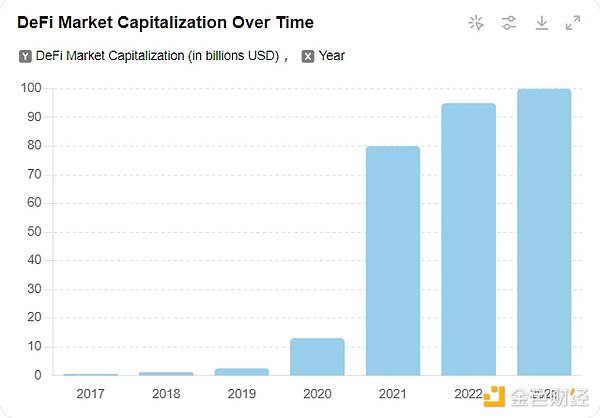
Figure 1 DeFi market value growth
While DeFi is booming, capital has begun to explore the combination of decentralized finance and other fields. During this period, the NFT market has ushered in a big explosion. In 2017, CryptoKitties, an Ethereum-based NFT project that allows players to buy, breed and trade digital cats, attracted widespread attention, and this project is often regarded as the starting point of the NFT explosion. The total market value of the NFT market has risen from a few million US dollars in 2018 to US$8 billion in 2023.

Figure 2 NFT market value growth
If DeFi has brought a steady stream of funds to the encryption market, then NFT has directed the blockchain's attention to entertainment and games. The combined effect of the two has provided a fertile ground for the development of blockchain games. Under this, GameFi, which combines the concepts of DeFi and blockchain games, has begun to emerge.
In the second half of 2019, MixMarvel Chief Strategy Officer Mary Ma first proposed the concept of GameFi - "gamified finance" and "new gamified business". This concept combines the elements of games and finance, aiming to introduce new business models and economic systems to the game industry through blockchain technology. In Mary Ma's view, future games are not only entertainment tools, but also financial tools. Through blockchain technology, virtual items in games can be turned into valuable digital assets, and players can obtain, trade and increase the value of these assets through games. In this model, game companies and players can jointly participate in economic activities in a decentralized environment to achieve mutual benefit and win-win results.
However, because blockchain technology and its application paradigm were not mature enough at the time, the concept of GameFi did not immediately attract widespread attention and application.
In September 2020, Andre Cronje, the founder of Yearn.finance, elaborated on his understanding and outlook on GameFi in a speech and public statement. With Andre Cronje's authority in the DeFi industry, the concept of GameFi began to truly enter the public eye. Andre Cronje's many views on GameFi also clarify the future development direction of GameFi.
In Andre Cronje's opinion, the DeFi industry is in the "TradeFi" stage, and users' funds are mainly used for transactions, pledges, and lending operations, which fails to reflect the difference between cryptocurrency and traditional finance. GameFi will be the future development direction of DeFi. User funds can not only be used for financial transactions, but also have practical application value in the virtual game world. Users can get rich token returns in the activities of the virtual game world, which will be similar to work in real life.
Since then, the GameFi field has begun to usher in the first wave of growth!
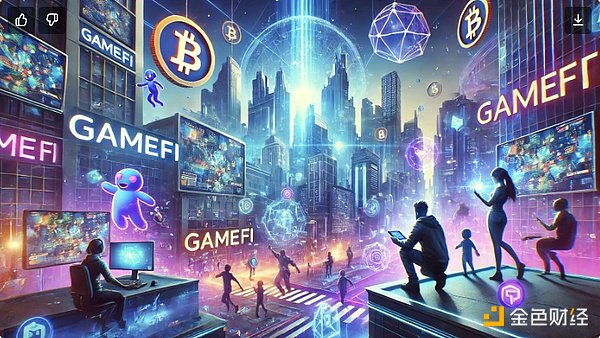
Figure 3 GameFi promotional picture
GameFi is a combination of DeFi, NFT and Blockchain Game's blockchain technology runs the game's assets and some of its logic in the blockchain's smart contracts, and DAO (decentralized autonomous organization) is responsible for managing the game's ecological development to ensure that users own the game's assets and have the right to govern the game; GameFi focuses on building a complete financial system and supports the use of game native tokens for props trading and other activities. Users can earn token revenue through games and share the benefits of game development.
In traditional games, it has long been a consensus that items such as props and skins have certain value. The average annual sales of CSGO props from 2018 to 2023 is higher than 420 million US dollars, and it is increasing year by year; the annual sales of League of Legends skin props has increased from 1.4 billion US dollars in 2018 to 2.5 billion US dollars in 2023; the annual sales of King of Glory skin props will even reach an exaggerated 2.74 billion US dollars in 2023. Whether at home or abroad, game props have a broad market space.
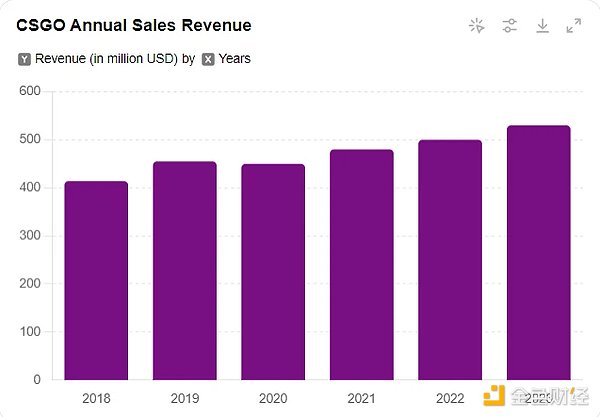
Figure 4 Annual sales of CSGO props
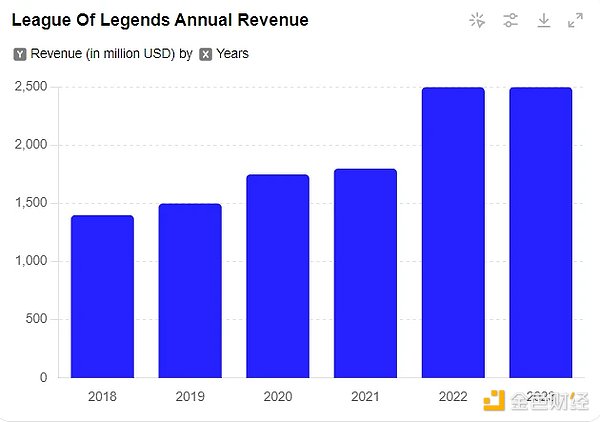
Figure 5 Annual sales of League of Legends props
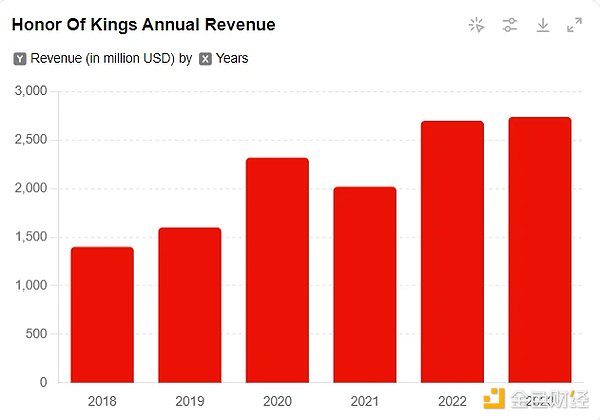
Figure 6 Annual sales of King of Glory props
However, since the transaction of props often damages the profits of game publishers and touches the legal red lines of certain countries and regions due to its financial attributes, game manufacturers have always adopted two strategies for the transaction of game props. One is to monopolize the prop trading market like CSGO and Steam, and charge higher transaction fees. The second is that League of Legends, King of Glory, etc. adopt unlimited prop supply, unify prop purchase channels, and strictly prohibit game account transactions.
It is precisely because of the prohibition of game manufacturers and local regulations that the black market sale of game props has become a highly profitable business. Within a certain limit, as game manufacturers and local regulations increase their crackdown on black market transactions, the supply line of black market props shifts to the left, and the sales profit increases.
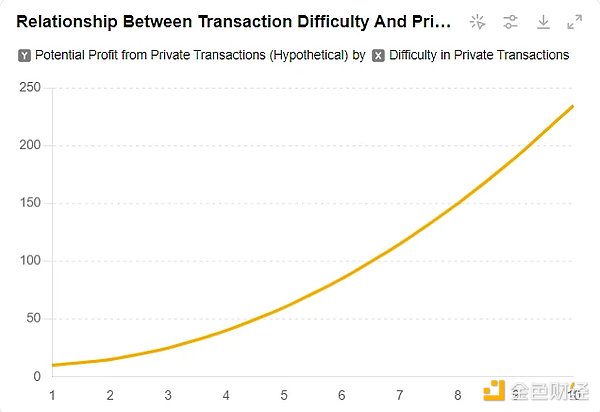
Figure 7 Rough curve of the relationship between private transaction profits and transaction difficulty
GameFi, built through blockchain technology, naturally has the attributes of DeFi, which can perfectly solve the current situation of game manufacturers monopolizing and black markets rampant. GameFi is both a game and a market. Game skins and props exist in the form of NFTs. All transactions will follow the rules of the market and remain as transparent as possible.
In addition, through DAO governance of game development, all players can share the governance power of the game, which is also a major feature of GameFi. At present, game manufacturers often operate the probability of lottery in secret and sell some high-priced game props in the past at a lower price to increase sales, which harms the interests of players who have already purchased them. Players' protests against these measures are also difficult to concentrate, and are often covered up by these technology giants through traffic control. DAO governance measures can shatter the current situation where game manufacturers have absolute voice. Users no longer have to worry about the game developing in a direction that is unfavorable to users, and enjoy the overall economic benefits brought by the development of games.
Looking at the development history of games, the improvement of computer technology, hardware upgrades, and innovation of game concepts are often important factors.
Early computer game stage (1970s-1980s): The early stage of the development of electronic games, mainly concentrated in laboratories and university environments. Famous early games include "Spacewar!") and "Pong", and the release of "Pong" marked the beginning of commercial electronic games.
Home console era (1980s-1990s): Nintendo released the home game console NES, which brought classic games such as "Super Mario Bros."
16-bit game console era (1990s): Sony released PlayStation, ushering in the era of optical disc games, and the game "Final Fantasy VII" triggered a game boom.
3D game era (late 1990s-early 2000s): Valve released "Half-Life", which won wide acclaim from players for its deep plot and immersive experience.
Online games and MMORPG era (2000s): Blizzard Entertainment released "World of Warcraft", which became one of the most successful MMORPGs and promoted the development of online multiplayer games.
Mobile and social game era (2010 to present): Supercell released Clash of Clans, which became one of the most successful mobile strategy games, and Niantic released Pokémon GO, combining augmented reality (AR) technology with mobile games, triggering a global craze.

Figure 8 Traditional game development line
GameFi has developed rapidly in recent years, proposed novel concepts and designs, and produced many top projects.
Early Exploration (2018): Decentraland was launched. As one of the early GameFi projects, Decentraland allows players to buy, develop and trade virtual land, using blockchain technology to achieve true ownership. Gods Unchained launched a blockchain-based collectible card game where players can buy, sell and trade cards, demonstrating the potential of NFTs in games.
Concept Proposal (2019): Mary Ma proposed the concepts of "gamified finance" and "new gamified business", marking the birth of the GameFi concept. In the same year, Axie Infinity, launched by Sky Mavis, began to enter the public eye.
Initial rise (2020): Andre Cronje, founder of Yearn.finance, reiterated the concept of GameFi in September 2020, predicting that DeFi will develop into a gamified financial stage in the future, and user funds will be used as equipment in the game. At this time, the DeFi and NFT markets also ushered in a golden period, laying the groundwork for the explosion of GameFi. Explosive Growth (2021): Axie Infinity achieved huge success, attracting millions of players and reaching a daily trading volume of US$1 million in August. The "play-to-earn" model enabled players to earn income through games, and became the main source of income for hundreds of thousands of residents in Southeast Asian countries during the epidemic. In the same year, The Sandbox became popular, allowing users to create, own and trade virtual assets and land, and was sought after by a large number of venture capital institutions.
Traffic has fallen sharply (2022 to present): Affected by the overall downward trend of the crypto market, the popularity of GameFi has seriously declined. The daily active user Satoshi of Axie Infinity plummeted from 740,000 in August 2021 to 35,000 in August 2022. At the same time, many GameFis are facing serious inflation problems. The number of DeFi Kingdoms tokens has risen from 60 million at the beginning of 2022 to 100 million in the middle of the year.
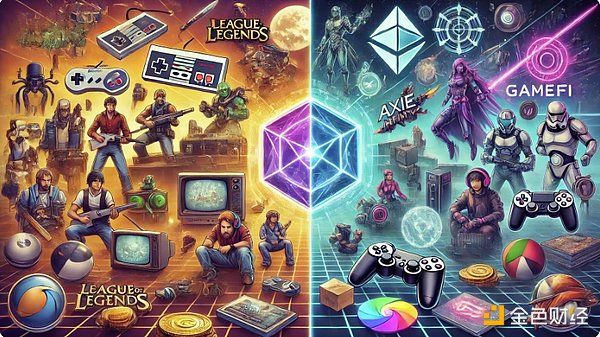
Figure 9 Game vs GameFi
GameFi's popularity has also led to the concept of the metaverse. The essence of the metaverse is to build a virtual shared space realized by AR (augmented reality) and VR (virtual reality), combined with decentralized technologies such as blockchain, which not only covers games, but also all aspects of life. And GameFi's free ecological construction method makes it synonymous with the metaverse in many scenarios. In the two years from 2021 to 2022, many traditional technology companies began to get involved in GameFi and the concept of the Metaverse.
Facebook changed its name to Meta, reflecting its long-term vision for the Metaverse.
Tencent established a new TiMi Studios, focusing on developing Metaverse-related games. And participated in The Sandbox and Decentraland.
Microsoft acquired Blizzard for $68.7 billion, planning to combine traditional popular games with blockchain technology to create a new generation of GameFi.
Goldman Sachs and SoftBank increased their investment in GameFi, supporting well-known GameFi projects such as Axie Infinity and The Sandbox.
GameFi's overall market value also increased from US$200 million in 2018 to US$24.52 billion in 2023, with a growth rate of 733.3% from 2020 to 2021.
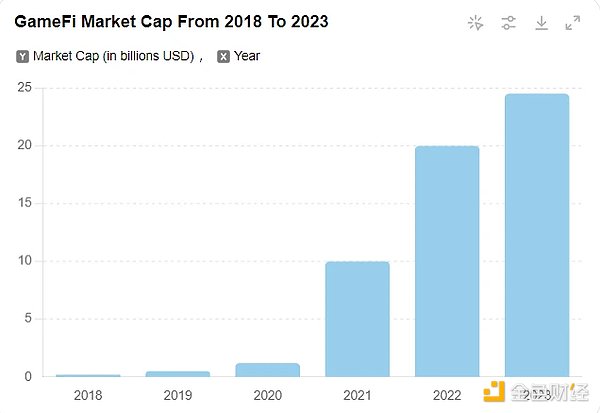
Figure 10 GameFi's market value growth chart
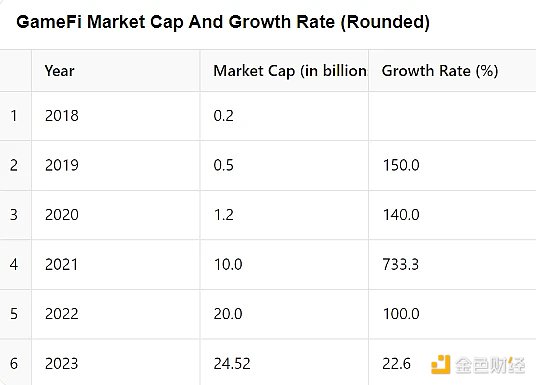
Figure 11 GameFi's market value growth rate
A narrative that combines the strengths of all schools
GameFi itself is a combination of DeFi+NFT+Blockchain Game, which not only makes the original boring DeFi lively, but also gives NFT technology without application scenarios a chance to land. At the same time, GameFi's governance model also provides an opportunity for the implementation of DAO organizations. Combined with the current hot concepts such as the metaverse, AR and VR are also expected to become part of GameFi's 3A masterpieces. Therefore, GameFi is a major application field that deeply applies blockchain technology and integrates it with virtual technology.
Financial characteristics are the biggest difference between GameFi and Blockchain Game. Blockchain Game often only focuses on using blockchain technology to improve game transparency, fairness and asset ownership, while GameFi focuses on introducing a complete financial system into the game and creating a Blockchain Game with financial attributes. Therefore, Blockchain Game can be a simple blockchain application game, while GameFi must include financial functions and economic systems.
From a technical perspective: The uniqueness and indivisibility of NFTs give each game item a unique value. By limiting the number of NFT items issued, the scarcity value of the items can be created.
From a rights perspective: In GameFi, the project party only appears as a game developer, bug fixer, and resolution caller. At the beginning of the game, it sells tokens and props NFTs to players, and at the same time, most of the power is delegated to ordinary players. The update and development of the game, the distribution of benefits, and other matters are decided by the DAO organization jointly composed of players and project parties.
From the perspective of mechanism: GameFi's "play-to-earn" model allows players to earn NFT props or tokens in the game through time and initial financial investment, and exchange them with real legal currency to generate economic benefits.
Introducing the financial system into the game is not unique to GameFi. Some traditional games already have complex financial systems, proving that this measure is feasible. The MMORPG (Massive Multiplayer Online Role-Playing) game "EVE Online" is famous for its complex financial system. The game simulates the real-world market, including production, trade, combat resource management, etc. There are more than 40,000 items. Players can mine minerals, manufacture goods, establish companies and alliances, and even conduct market manipulation. CCP Game, the developer of EVE Online, hired economist Eyjólfur Guðmundsson to study the economic operation mechanism within the game and regulate the huge market in a timely manner to prevent market collapse.
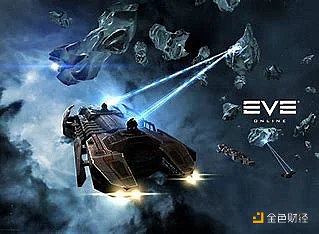
Figure 12 Promotional picture of "EVE Online"
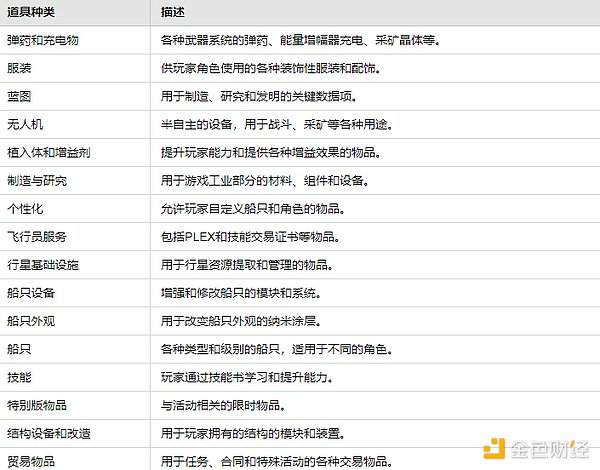
Figure 13 Some game props of "EVE Online"
Cross-chain asset interoperability + multi-platform operation to create a large financial circle
A single GameFi may face problems such as a small number of users, low activity, and unstable funds. Cross-chain asset interoperability and multi-platform operation may improve this problem. Each GameFi is an economy. When GameFis are interconnected, they can form a large economic market, which requires the comprehensive application of cross-chain, cross-platform compatibility, data synchronization and consistency, and decentralized account management.
Cross-chain technology: Through cross-chain bridge technology or interoperability protocols, users are allowed to conduct direct transactions and communications between different blockchains.
Cross-platform compatibility: At the beginning of GameFi's development, it is necessary to ensure that it can run in different hardware and software environments. The use of highly compatible game engines such as Unity and Unreal Engine and standardized APIs is important for achieving cross-platform compatibility.
Data synchronization and consistency: Through State Channels technology, users can complete transactions off-chain, and only submit the final status to the blockchain for information synchronization, reducing the pressure of data transmission.
Decentralized account management: When supporting GameFi cross-chain and multi-platform operations, DID (decentralized identity), SSO (single sign-on) and distributed account storage become very important. Through these technologies, the pressure on users to manage accounts can be reduced and security can be improved.
A unified and effective financial cycle can not only improve the liquidity of funds within the cycle, but even as Andre Cronje expects, it is expected to become the direction of future DeFi development. In addition, the GameFi financial cycle will simulate the financial behavior between countries and regions in the real world, providing a model for further research in economics.
Benefiting from the explosive growth of GameFi in 2021, the concept of the metaverse once occupied the hot spots of A-shares and US stocks. During this period, fraud cases under the name of the metaverse concept emerged one after another. Against this background, GameFi was gradually given the hope of taking over the concept of the metaverse.
At the same time, AR and VR technologies of the connected metaverse began to flourish. In 2023, the global AR and VR market size exceeded US$70 billion, and is expected to exceed US$400 billion in 2030.
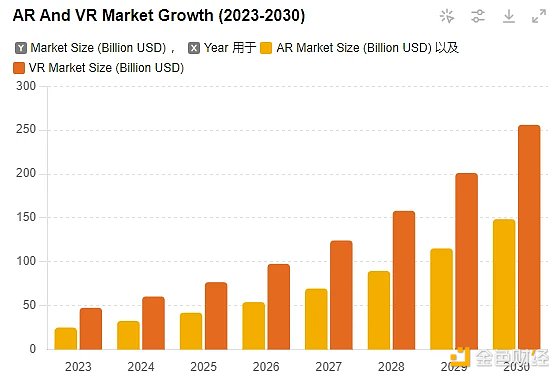
Figure 14 AR, VR market size estimation
Many projects have begun to work on the underlying implementation of the integration of blockchain and AR, VR technology, making it possible for GameFi to combine AR, VR technology in the future and bring "Ready Player One" into reality.
Render Network: Provides distributed GPU rendering services, supports high-quality 3D rendering for AR and VR, and many applications including Apple Vision Pro already provide this service.
Ozone: Provides 3D applications and cloud computing services that support multi-chain and cross-chain.
IOTX: Provides a secure, privacy-protected and scalable blockchain platform to connect and manage IoT devices.
Faced with such future demands in the virtual market, it has gradually become a consensus that GameFi will combine AR and VR technologies to create a new generation of 3A masterpieces.
On November 28, 2017, CryptoKitties (CryptoKitties or CryptoKitties) logged into the Ethereum blockchain and became the first phenomenal DAPP. Its appearance proved to users that Ethereum is not only about token issuance, but also simple and interesting NFT games. CryptoKitties provides a series of innovative gameplay.
Users can use ETH to buy a cat NFT of their own in the CryptoKitties Market.
Each cat has a unique genetic code, and you can find each cat's parents, brothers, and past activities in the market.
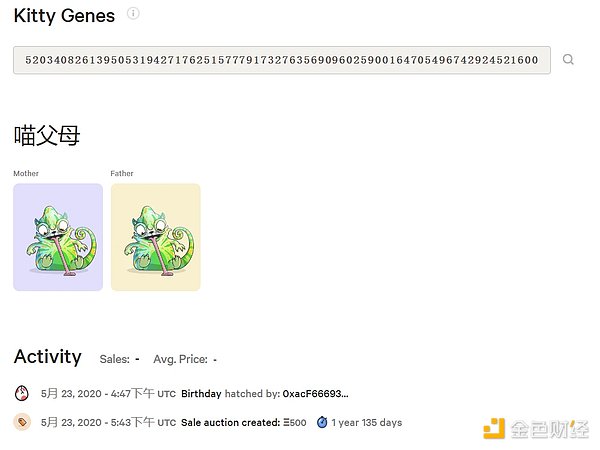
Figure 15 CryptoKitties Information
Two cats can breed to produce a new generation of kittens. After breeding, the cats will have a cooling-off period, which will increase with the number of breeding times. The new generation of kittens will integrate the cooling-off period.
Players can rent their cats to breed with other people's cats, give cats to others, or auction them on the market.
CryptoKitties' groundbreaking gameplay and high profit expectations quickly attracted the attention of speculators. One of the cats named "Dragon" was sold for 600 ETH (about 170,000 US dollars), setting a historic record. The CryptoKitties project was also separated from the original company Axiom Zen Game Studio and received 12 million US dollars in investment from two top venture capital firms, a16z and USV.
As of 2024, the CryptoKitties project has conducted more than 700,000 transactions, with a total transaction volume of 67,818 ETH, equivalent to about 115 million US dollars. However, since mid-2018, the transaction volume of the CryptoKitties project has fallen sharply and has completely left the market hotspot.
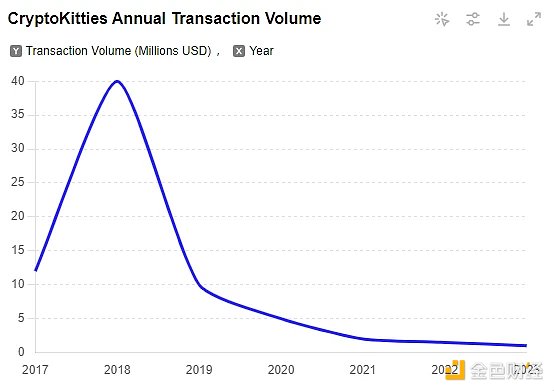
Figure 16 Changes in CryptoKitties transaction volume
Although the original intention of the CryptoKitties project was not a Ponzi scheme, but hoped to explore more channels for the future development of Ethereum through NFT games, it also caused a very serious economic bubble.
The popularity of CryptoKitties triggered an explosion of early Blockchains, but most of these Blockchains did not have any innovations. The most well-known project is Fomo 3D. Fomo 3D is a simple fool game with four main types of gameplay. The core mechanism is treasure hunting, and it is combined with the team dividend mechanism, recommendation reward mechanism and lucky candy mechanism to increase profitability.
The treasure-grabbing mechanism is aimed at gamblers. In Fomo 3D, each full game includes a 24-hour countdown. During the countdown, players spend Ethereum to buy the game's token, "Key". Every time a player buys a "Key", the countdown will increase by 90 seconds (no more if it exceeds 24 hours). In the end, whoever becomes the last player to buy more than or equal to 1 "Key" at the end of the 24-hour countdown will take away 48% of the prize pool. In order to ensure that the entire game can be completed, Fomo 3D will continuously and dynamically adjust the price of the "Key". After each purchase of a "Key", subsequent people will need to pay a higher price to purchase it. Over time, as the cost of player participation increases, there is a situation where the countdown speed is faster than 90 seconds, and eventually the game ends.
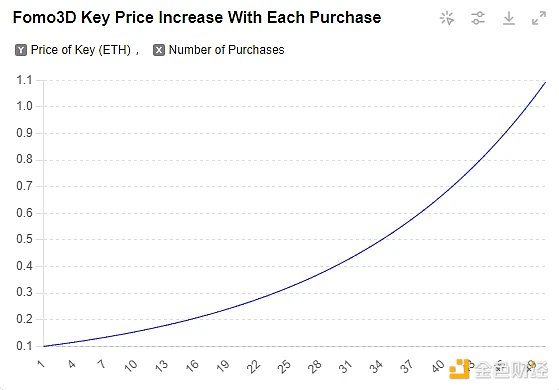
Figure 17 Fomo 3D "Key" price changes with the purchase quantity
Obviously, Fomo 3D is a typical Ponzi scheme game. Everyone wants to be the final winner, but most people will lose everything.
Ponzi schemes like Fomo 3D were the norm during the GameFi 1.0 period. They were almost all Ponzi schemes that took money from new users and gave rewards to old users. The fragile balance under the high rate of return was very easy to collapse due to factors such as the sale of local currency, the fading of popularity, and the decrease in new users. And these Blockchain Games are completely incomparable to traditional games in terms of fun. Therefore, in essence, the Blockchain Games of this period did not have a complete financial system and could not be called GameFi.
GameFi 2.0 era is the stage of vigorous development of the GameFi concept. From "play-to-earn" to "x-to-earn", it will expand the financial system of Blockchain step by step, and gradually introduce financial elements such as community, transaction, battle, and market into GameFi.
Unlike all previous Blockchain Games, Axie Infinity combines the "play-to-earn" concept with complex financial mechanisms for the first time, creating an attractive NFT creature world where players can collect, breed, fight and trade elves named Axie in the game.
Early stage (2018): Axie Infinity was released by the Vietnamese startup team Sky Mavis. The game was originally inspired by Pokémon and CryptoKitties. The team hopes to create a player-autonomous Pokémon world.
Early development stage (2019-2020): Axie Infinity is officially launched on the Ethereum blockchain. Players can buy Axie, breed them, and sell them on the market. Subsequently, Axie Infinity launched the PVP mode and adventure system, further increasing the playability of the game.
Explosion period (2021): Due to the "play-to-earn" mode in the game, Axie Infinity has attracted a large number of players. A film called "Play and Earn - NFT Games in the Philippines" has allowed more people to see this promising game.
Expansion stage (2022 to present): Axie Infinity is developing stealthily. There are currently six sections: Axie Infinity Origins, Axie Infinity: Homeland, Axie Classic, Axie Infinity: Raylights, Defenders of Lunacian and Project T prototype.
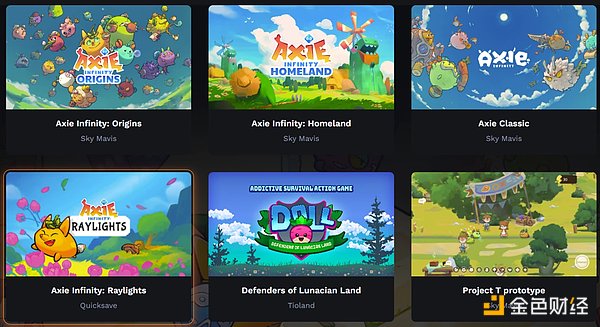
Figure 18 Axie Infinity game mode
In the Axie Classic version, users need to purchase 3 Axies to start fighting or breeding. Each Axie is unique and belongs entirely to the player's personal property. Axie is given randomly assigned attribute tendencies when it is born, including health, skills, speed and morale. Axie also has different racial attributes, which can provide certain restraint relationships in battle. There are many details in the specific game rules of Axie, which will not be elaborated here.
Axie Infinity's token governance model is dual-currency governance, in which AXS is the governance token and SLP is the game token.
AXS's role
AXS holders have voting rights on the governance of the Axie Infinity ecosystem, including the future development direction of the game and major decisions.
Players can stake AXS tokens to get rewards.
When breeding Axie, you need to pay a portion of AXS as breeding fees.
AXS is also used as a token for in-game events.
SLP Role
SLP is mainly used for Axie breeding. Each breeding requires a certain amount of SLP. The more times you breed, the more SLP you need.
Players can obtain generous SLP rewards by completing daily tasks, participating in PVE (Adventure Mode) and PVP (Arena Mode).
Unique Scholarship Mechanism
Axie Infinity has a unique scholarship mechanism. Axie holders can lend Axie to apprentices. Apprentices use Axie to fight and obtain SLP, and holders can reap a share of the proceeds. Under this mechanism, diligent players who are familiar with the rules of the game can enter the game with zero threshold, continuously earn AXS and SLP, and grow the Axie team. During the epidemic, a large number of Filipinos maintained their basic lives through Axie games. This is one of the few blockchain projects that has truly improved people's lives.
Axie Infinity's creative achievements are also reflected in the project's MAU (monthly active users), transaction volume and revenue. In August 2021, Axie Infinity's total transaction volume exceeded US$2 billion, and its monthly revenue reached US$364 million, surpassing "Honor of Kings" for the first time; at the end of the same year, the number of monthly active users reached more than 2 million.
Although Axie Infinity has made groundbreaking breakthroughs in the development of GameFi, it is still affected by the economic bubble and the overall market downturn. The number of its active users has dropped from a peak of 2.7 million in 2021 to 400,000 in 2023. Currently, the number of monthly users is only about 100,000, and its transaction volume has also dropped from $4 billion in 2021 to $200 million in 2023.
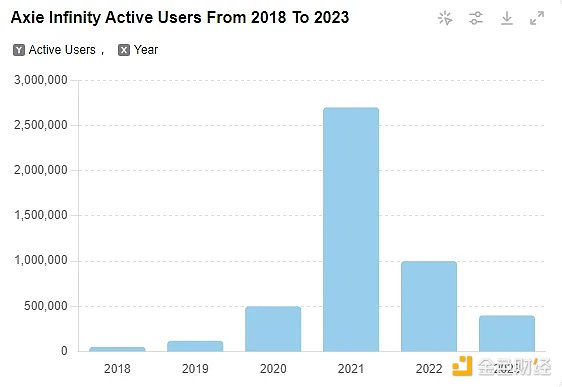
Figure 19 Axie Infinity Active User Changes
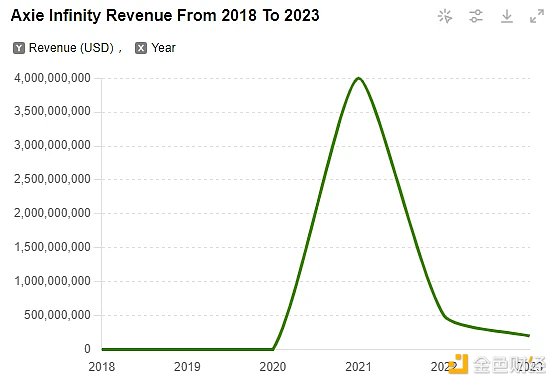
Figure 20 Axie Infinity Annual Sales Changes

Figure 21 Overview of Axie sales in the past 30 days
Axie Infinity first implemented the concept and model of GameFi through the "play-to-earn" model, and successfully attracted people who really like this game through the PEP and PVP models. It is a successful example in GameFi.
If Axie Infinity is the casual version of GameFi, then The Sandbox is definitely the epic masterpiece. The Sandbox is based on two popular sandbox games, The Sandbox and Sandbox Evolution, which have been downloaded more than 40 million times on iOS and Android. In 2018, publisher Pixowl decided to bring this successful user-generated content game IP and a large community of creators from mobile devices to the blockchain ecosystem, providing creators with real intellectual property through NFTs and rewarding their contributions to the community in the form of tokens. Thus, this great work, The Sandbox, came into being.
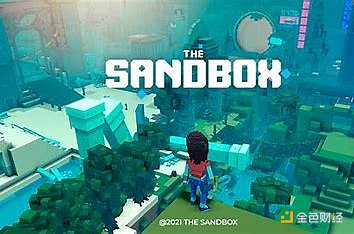
Figure 22 The Sandbox Promotion
From a technical perspective: The Sandbox inherits the UGC (user-generated content ecosystem) model of past sandbox games, and provides three integrated functions: VoxEdit, MakeTPlace, and Game Maker to provide users with a comprehensive design experience, while supporting copyright protection for successful designs through blockchain and smart contracts.
From the token model level: The Sandbox provides three tokens to ensure the economic cycle within the game, namely SAND, LAND and ASSETS (material assets).
SAND follows the ERC-20 standard and is the token required by players to acquire material assets, purchase land and for creators to publish content in The Sandbox. SAND also has ecological governance functions and has the function of staking to obtain SAND income.
LAND follows the ERC-721 standard and is the land asset in the game. Each piece of LADN is 96*96 in size. After purchasing LAND, players can add game and material assets to LAND and set up their own game rules. Multiple pieces of LAND can form a larger ESTATE, which is suitable for creating larger and more content-rich sandbox games.
ASSETS follows the ERC-1155 standard and is a token generated by the creator to prove property rights. It can be sold on the front-end webpage of The Sandbox.
The Sandbox is highly sought after by capital for its powerful IP effect, novel game concept and free and open financial system. In 2018, Animoca Brands acquired Pixowl and provided long-term assistance to the development of The Sandbox; in 2019, The Sandbox received US$2.5 million in seed round financing led by Hashed; in 2020, The Sandbox raised US$3 million from True Global Ventures, Square Enix and other institutions in a round of A financing; in 2021. The Sandbox's strong ecosystem that distinguishes it from inferior Blockchain Games was discovered by SoftBank, and it received $93 million in Series B financing led by SoftBank.
And The Sandbox has not disappointed the expectations of major investment institutions. Since LAND began to be sold, the average price has continued to rise. Today, the floor price on the NFT exchange OpenSea is still as high as 0.12 ETH.
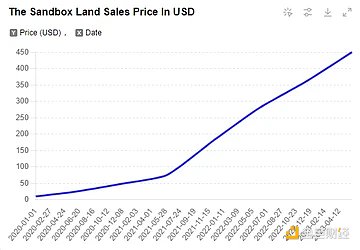
Figure 23 Changes in the average selling price of LADN
In addition, many LANDs in core locations were sold at sky-high prices. In November 2021, virtual real estate investment company Republic Realm purchased a piece of virtual land in The Sandbox for $4.3 million. The following month, Snoop Dogg's nearby LAND was sold for approximately $450,000.
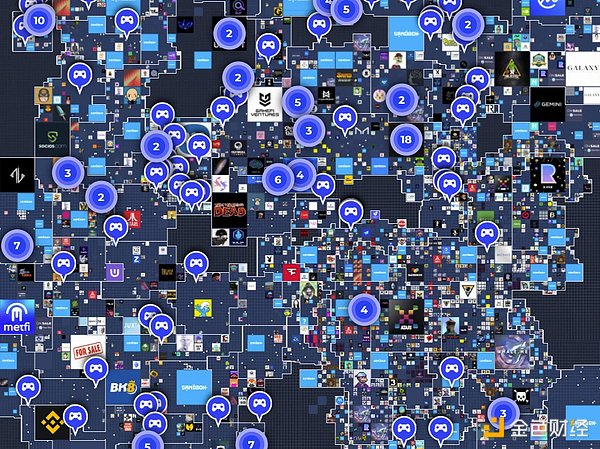
Figure 24 LAND land distribution partial map
The Sandbox's market value has fluctuated greatly since its ICO, reaching a peak of US$6.8 billion. It is still as high as US$700 million. The profits made by venture capital companies that invested in The Sandbox are difficult to estimate.
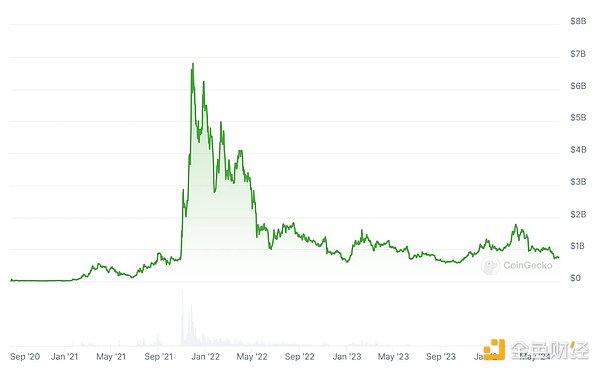
Figure 25 Changes in the market value of The Sandbox
Overall, the emergence of The Sandbox provides an example for the combination of traditional IP and blockchain technology, and also demonstrates the powerful wealth accumulation effect of high-quality GameFi.
Recently, Not, Hamster and other Telegram mini games have become popular. You can get tokens just by moving your fingers in front of the screen. Such simple operations have led to the viral development of its community, and tens of millions of users can participate in the short term. Since the launch of Not Games in January 2024, the number of participants has exceeded 30 million, with an average daily active volume of 5 million. Subsequently, Notcoin also successfully completed ICO on multiple exchanges including Binance, with an increase of more than 400% in 7 days.
However, these games themselves are built on Telegram and can only be called Mini Games. They do not have a complete financial system and are very lacking in IP effects and playability. It can be said that their popularity is almost entirely supported by the concept of "fair launch". Unlike similar WeChat mini games, Mini Games on Telegram are not restricted by the platform, and the benefits they obtain can be seen as the extension of Web2 to Web3.
The game forms are diverse, but the market is still a blue ocean
2023 to 2024 are the two years in which GameFi has developed rapidly in terms of game forms. Currently, it mainly covers Farming/Mining Game, Card Game, Move-to-earn Game, MMORPG, Mataverse Game, Auto Battles and other types.
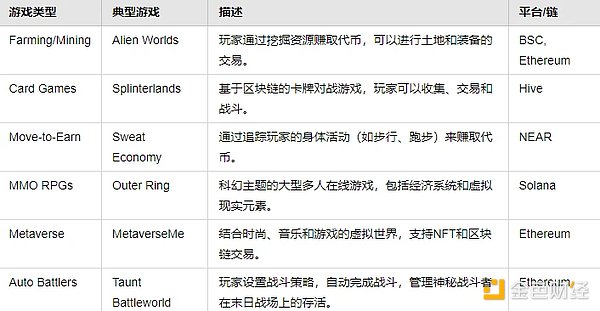
Figure 26 GameFi game forms and typical games
On DAppradar, GameFi Matr1x, which ranks first in UAW (number of active users), is an MMORPG type game. In the past 30 days, the number of active users reached 1.92 million, but the circulating market value was only 49 million US dollars. At present, the market hotspots are mainly concentrated in the basic fields such as Layer 1 and Layer 2 construction, while GameFi tends to be a comprehensive application of technology. With the breakthroughs in the basic fields, there is still a chance for a second outbreak.
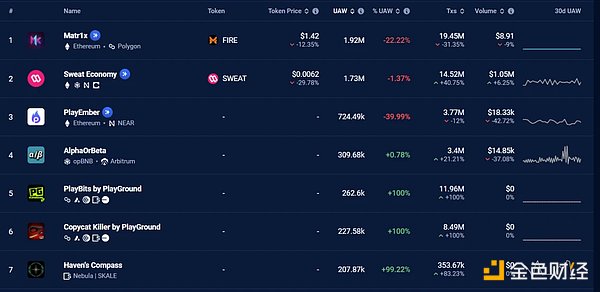
Figure 27 DAppradar GameFi ranking
Full-chain games
Full-chain games are game modes in which all the logic, data and assets of the game are run and stored on the blockchain. In the period of GameFi 1.0 to GameFi 2.0, most games only had assets or part of the logic on the chain, while the full-chain game emphasizes complete decentralization and transparency, which can perfectly avoid problems such as game plug-ins. Autonomous World can be seen as a major manifestation of full-chain games. It builds a virtual world based on blockchain technology, making the rules and operations of the entire world monitorable. The goal of GameFi's future development must be full-chain games.
GameFi+?
In the current market, a single GameFi is difficult to gain market favor, and combining it with AI, the Internet of Things, etc. may be the way to break the current situation. A series of GameFi+AI projects such as colony, Nimnetwork, Futureverse, Palio, and Ultiverse have broken the deadlock. Among them, Palio received $15 million from Binance Labs to develop and integrate AI technology, showing the recognition and pursuit of GameFi+AI projects by major VCs. In addition, the combination of GameFi with hot topics such as the Internet of Things and cloud computing is also a major development path.
From the perspective of technology, IP effect and playability
Axie Infinity borrowed from the game "Pokemon" to develop a pet battle game on the blockchain, and The Sandbox was the blockchain migration of "Sand" and "Sand Evolution", which is enough to show that traditional IP has unlimited development potential in the blockchain. Although Axie Infinity and The Sandbox have experienced serious economic bubbles, their current market values are still as high as $800 million and $700 million, which also proves that their projects have the ability to attract real users.
In addition, many game companies plan to introduce blockchain technology in classic games.
Atari has partnered with The Sandbox to bring its classic games such as Centipede and Pong to the Metaverse platform. Players can use SAND tokens in The Sandbox to participate in and create experiences based on these classic games.
Square Enix announced plans to bring its well-known game IPs, Final Fantasy and Dragon Quest, to the blockchain platform.
Capcom announced that it will explore ways to bring its well-known games such as Street Fighter and Resident Evil to the blockchain gaming field.
In the traditional game field, the emergence of MOBA games such as League of Legends and Honor of Kings often represents the peak of game development. In the field of GameFi, the current breakthrough method is to create a game with high playability and a complete financial system. Whoever can first introduce excellent game IP will have the opportunity to gain first-mover advantage.
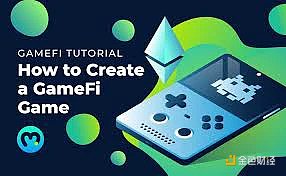
Figure 28 GameFi Promotion
GameFi is essentially a combination of DeFi+NFT+Blockchain Game, which is a unified application of blockchain technology and a new stage in the development of games.
GameFi has gone through the 1.0 and 2.0 eras, and has gradually transformed from a Ponzi scheme in the past to a gaming ecosystem that is attractive to real users.
Currently, the hot spots in the blockchain industry are concentrated on the construction of basic ecosystems such as Layer 1 and Layer 2, and GameFi is still gathering momentum.
"Full-chain games" and "GameFi+?" are the development trends of GameFi 3.0.
Investment in GameFi needs to focus on its IP, playability and technology. Only GameFi that can truly attract players has the potential for long-term development.
On June 3, the GameFi sector saw unusual movements, and the top five gainers on Binance were all GameFi-related tokens.
 JinseFinance
JinseFinanceWhat is the current development status of the GameFi track? Which projects are worthy of attention? What security challenges will GameFi track face?
 JinseFinance
JinseFinance JinseFinance
JinseFinanceThis article explores the rise of GameFi tokens and the exciting possibilities they offer at the intersection of gaming and DeFi.
 Bitcoinworld
Bitcoinworld
Supported by data, this report analyzes the performance of various projects in the GameFi industry in terms of user behavior, on-chain transactions, financing, and currency price fluctuations.
 Cointelegraph
CointelegraphLondon - Europe is set to become a future hotspot for the Metaverse as HyperNation prepares to launch its latest ...
 Bitcoinist
BitcoinistAnd over the past few years, GameFi has emerged as the newest category in the crypto economy.
 Ftftx
FtftxHow should the future story of GameFi be written?
 Cointelegraph
CointelegraphThe narrative logic of GameFi lies in two points: first, the main promotion of the old-age chain games is "player's ownership of in-game assets"; second, "Play2Earn".
 Cointelegraph
Cointelegraph